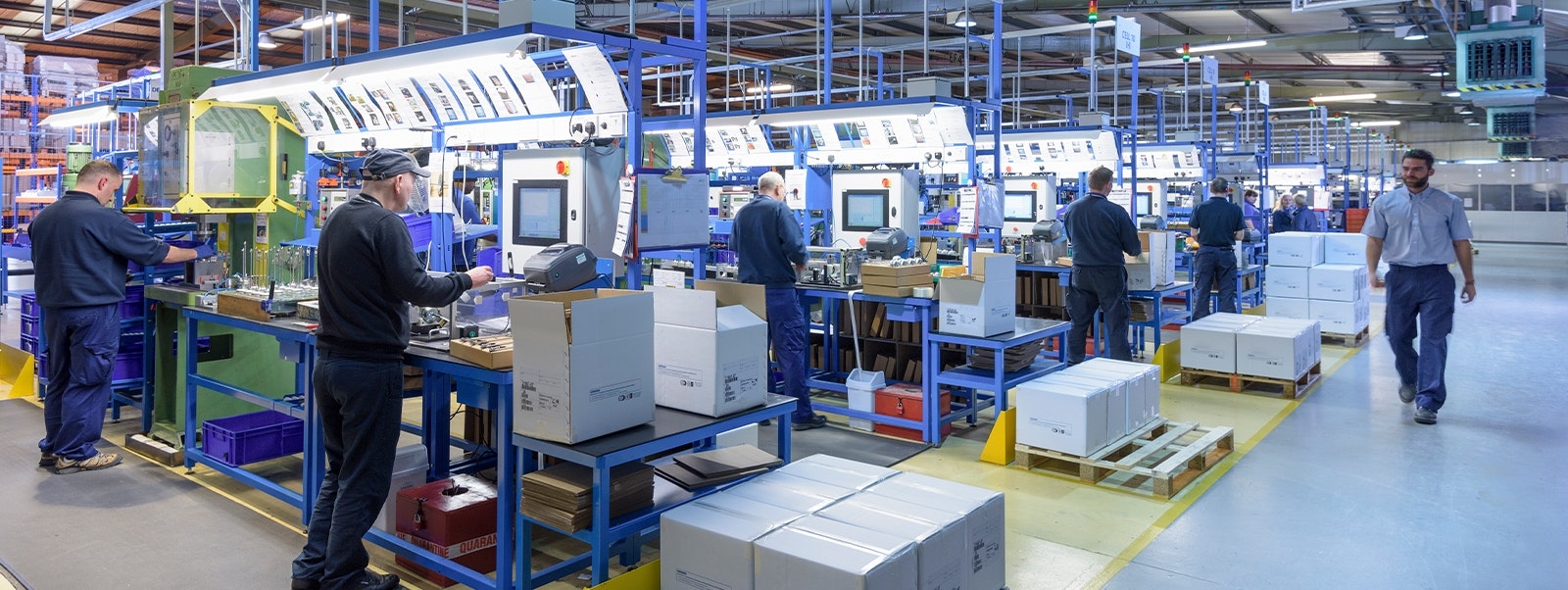As a result, the majority of factories has resumed operations, although capacity utilization often is low, sometimes lower than break-even levels.
There’s been considerable discussion about whether the recession following COVID-19 will be V-shaped (sharp decline with strong recovery) or U-shaped (with a longer depressed period). It has become clear that the economic downturn will last for a while: Until an effective COVID-19 vaccine or treatment is available for people worldwide (which could take a year or even much longer), we need to expect regional outbreaks from time to time. This will lead to new waves of partial or full lockdowns including quarantines and other hygiene measures. These measures will heavily affect companies’ own production as well as inbound and outbound supply chains.
To be better prepared for the challenges this new chapter will bring, it is important that executives think about the strategic realignment of production. Below is a set of strategies that is designed to helped business leaders find the right way forward. Some of these strategies can be combined, some not, and some depend on each other. Each company must decide which strategies to take and how to implement them within the context of their own specific situation.
Adapting capacities and driving outsourcing while safeguarding strategic advantage: Although reducing capacities is an obvious strategy for companies suffering from low demand, it’s key to ensure that strategically relevant production capabilities and capacities will not be sacrificed. What strategically relevant means exactly is an intense topic of debate within many companies at the moment. It’s therefore crucial that these discussions are conducted both quickly and in a fact-based way. Outsourcing is one of the options to practically reduce capacities and become more independent from future demand fluctuations. In many companies, the outsourcing potential has not been fully exploited yet, and it is strongly recommended to systematically explore opportunities now.
Investing in production flexibility: While output, cost, on-time delivery, and quality have been standard key performance indicators (KPIs) for production executives for many years, the adaptability of production to market demand changes will become a strategic success factor for the foreseeable future. This flexibility can relate to products, production processes, and production volumes. Factories able to produce a variety of products, and able to perform various processes, will do better than many highly specialized factories. The adaptability to production volume changes is of especially high relevance, given that heavy fluctuations can be expected. And the ability to smoothly ramp-down and ramp-up, including performing launches without any frictions and at minimal cost, will be much more important than in the past. In a time where most companies have postponed or canceled plans to build up new factories, executives need to make sound decisions about investments that allow for flexibility.
Introducing COVID-19-oriented production system: Nearly all companies have recently implemented health measures for production including social distancing, introducing protection walls made of glass or foil, the mandatory wearing of masks, and so forth. Production processes and equipment have mostly not been adapted. The measures taken have greatly helped to resume production, but in many cases, they also have impacted the utilization of workers and machines, thereby negatively affecting efficiency and productivity. As a specific example, prior to COVID-19 certain production activities could be conducted by two workers simultaneously. To ensure social distancing some of these activities now have to be conducted sequentially leading to waiting times. Given the fight against COVID-19 will not be over soon, executives must more rigorously think about adapting production processes, equipment, automation, and layout in order to re-establish the high levels of efficiency and productivity. Production concepts and technologies, that were successful in pre-COVID-19 times, must be thoroughly checked to establish if they still are the best solution for the next few years.
Executives should invest more time to explore the potential of automation and “remote production control”. Crucial are those ideas which combine the limitation of direct and close contacts between humans with improvement of cost, efficiency, and flexibility. Specific examples include the automation of truck-unloading, in-plant transportation, and part commissioning, as well as digital enhancement of quality control, predictive maintenance, and shop floor management. These ideas are not completely new. Instead, they have been discussed under the umbrella of the Internet of Things/ Industry 4.0 for some years. However, most of these ideas are still not or not rigorously implemented. Well-performing communication networks are a key enabler for implementation, so companies may need to speed up or adapt their 5G strategies.
Insourcing to utilize the current workforce: Being confronted with low levels of capacity utilization, the insourcing of selected processes can add value in certain situations. This is especially the case when companies do not want to reduce their capacities, or when capacity reduction is difficult to realize in the short-term. In those cases, a systematic review of insourcing opportunities can help to improve overall costs, and to get more independent from unstable supply chains. To realize insourcing, capabilities must be evaluated, and, where needed, built up.
Rethinking global supply chains: Flexible and resilient production is only helpful when inbound and outbound supply chains work as well. Some companies already have started investing in improved supply chain transparency: Knowing the entire supply chain including demand, stock levels, production plans, and capacities is very important for a company to steer their own production factories. However, this improved level of transparency needs specific actions to capitalize, and executives may want to invest more time in proactively shaping the supply chains.
Many of today’s supply chains are characterized by three features: Global suppliers, single or dual sourcing strategies, and multiple tiers comprising of many suppliers. These supply chains are the result of decades of cost-reduction initiatives. However, they also come with a tremendous amount of “tourism”: Before a certain component (or module, or part) arrives at the factory of a company, this component and its various raw materials often have traveled several countries and continents, and dozens or hundreds of sub-suppliers are involved. This is what makes the supply chains so vulnerable to delivery problems in times of COVID-19. As we can expect that new COVID-19 outbreaks and related hygiene measures will not occur in all regions at the same time, it is beneficial from a risk perspective if a factory and its supply chains are in the same region. Building up new suppliers, transferring supplier production locations, and simplifying supply chains need money and time. Executives should review their supply chains, define, and evaluate options for adaptation, and set priorities for action.
Establishing dynamic transportation models: Prior to COVID-19, the demand for many parts was relatively high and stable. As a result, it was quite easy to fully utilize bins, containers, and trucks, thereby achieving cost-efficient transportation. Now, demand for many parts is much lower than before, and demand fluctuations tend to be higher. This has made it much more difficult for many companies to achieve full truck load. To cope with the new challenges, companies must introduce a dynamic transportation model for both inbound and outbound: Very frequently, depending on changes to production plans and availability of suppliers and logistics service providers, the transportation set-up needs to be adapted: This set-up relates to the selection of mode of transportation, service providers, itineraries, and delivery frequencies. In addition, many point-to-point deliveries are not efficient anymore and need to be replaced by milk-runs or groupage collections. To achieve a dynamic transportation model requires the right tools to handle masses of data for demand and supply, and a review of the supply chain organization and communication.
Overall, COVID-19 has brought huge challenges for production. After the successful introduction of hygiene measures, executives may want to put even more effort in the development of production strategies: Flexible adaptation of production and supply chains will become a strategic success factor for the years to come.



